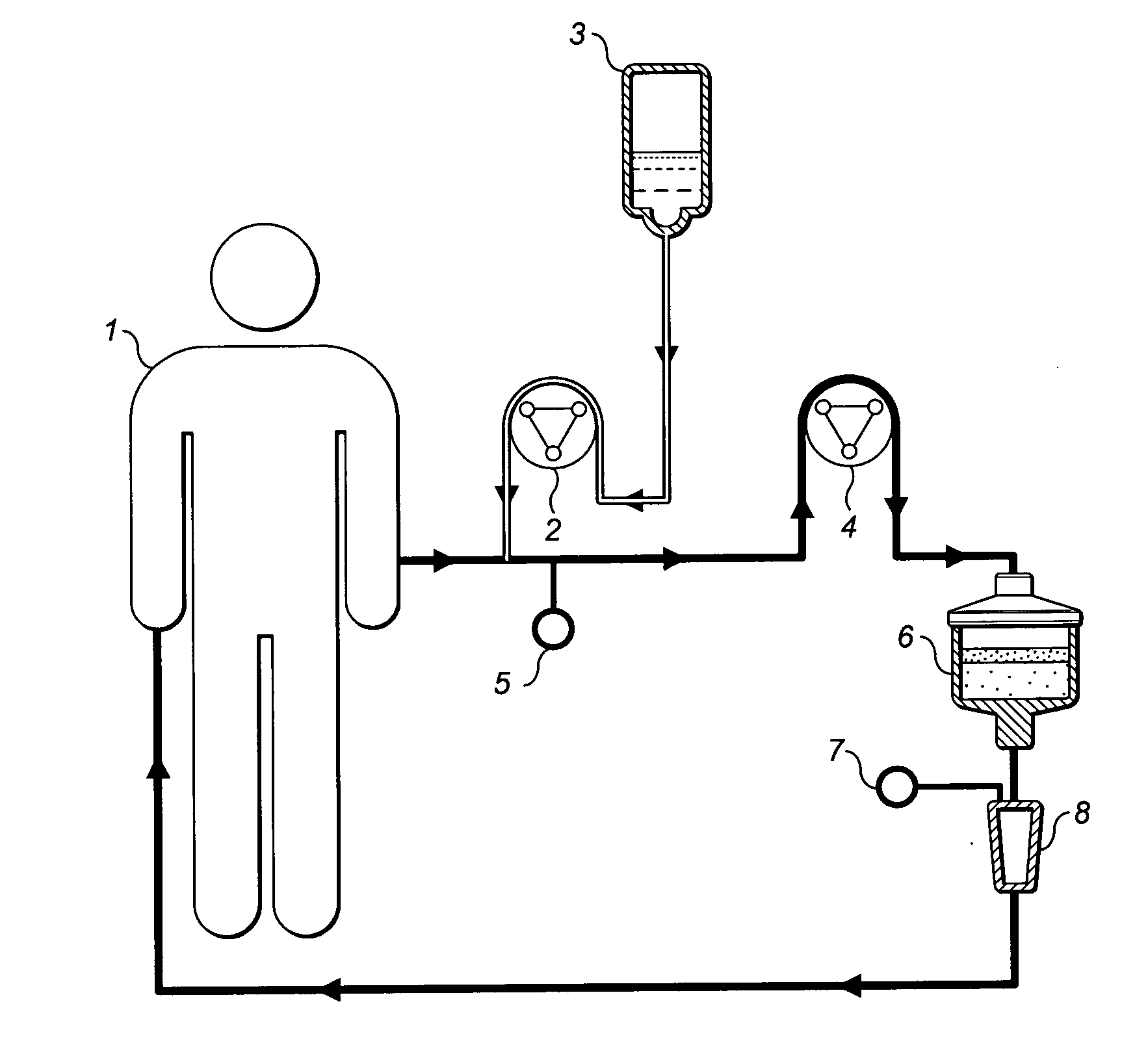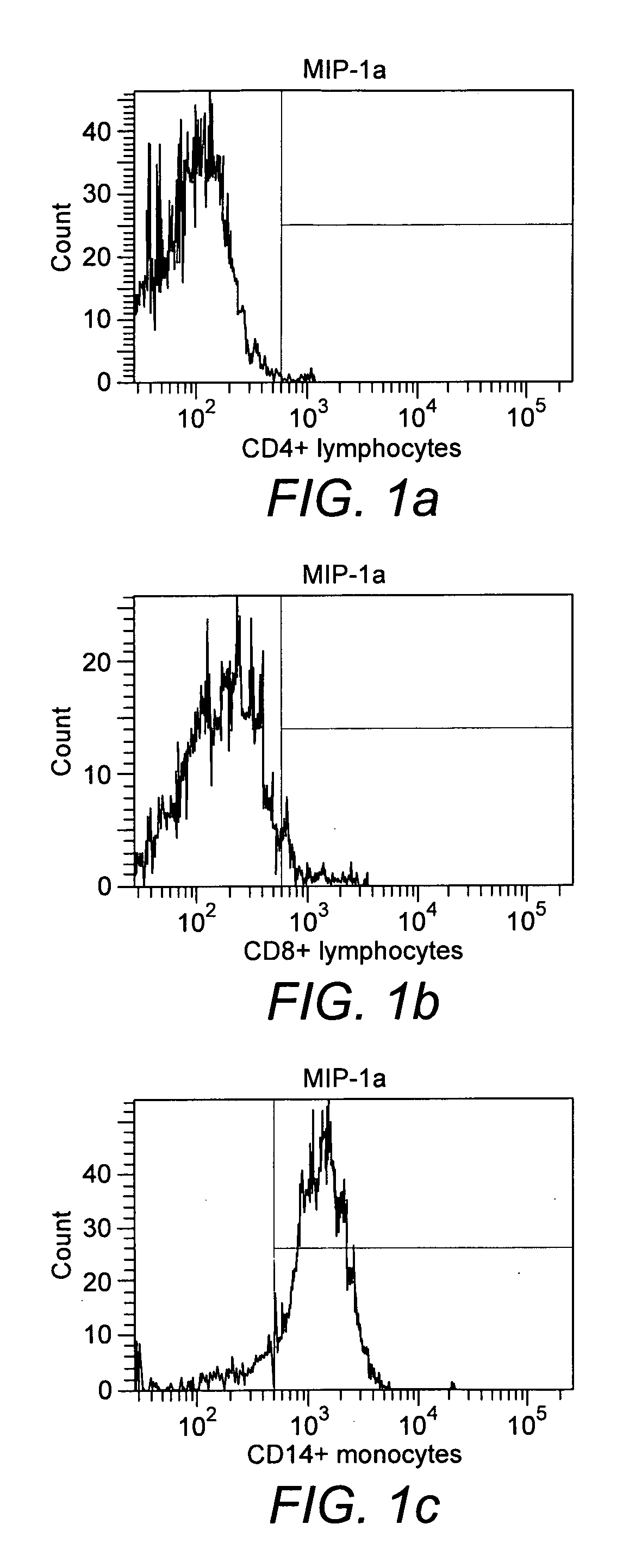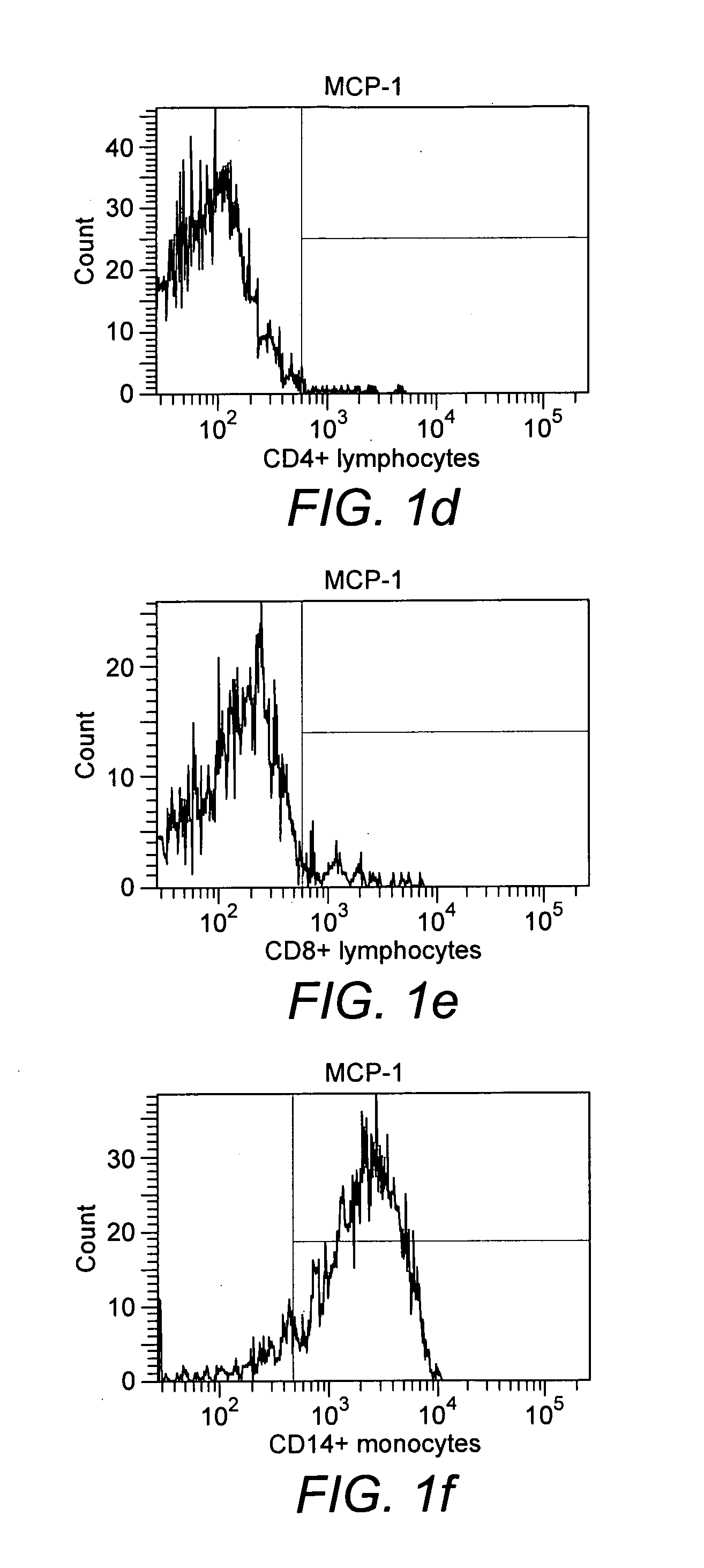Treating inflammatory conditions
a technology for inflammatory conditions and inflammatory conditions, applied in the field of treating inflammatory conditions, can solve the problems of ulcerative colitis that has a tendency of recurring, medical treatment cannot cure the disease, and serious adverse effects, so as to minimize side-product formation, improve labeling, and improve protein synthesis
- Summary
- Abstract
- Description
- Claims
- Application Information
AI Technical Summary
Benefits of technology
Problems solved by technology
Method used
Image
Examples
example 1
[0050]Binding of monocytes to MIP-1α. In the experiment with biotinylated MIP-1α it was found that about 90% of the monocytes obtained from peripheral blood of healthy donors had bound to the cytokine after 30 min of incubation (FIG. 1c), whereas CD4+ and CD8+ lymphocytes had not bound (FIGS. 1a and 1b).
example 2
[0051]Binding of monocytes to MCP-1. In the experiment with biotinylated MCP-1 it was found that about 90% of the monocytes obtained from peripheral blood of healthy donors had bound to the cytokine after 30 min of incubation (FIG. 10, whereas CD4+ and CD8+ lymphocytes had not bound (FIGS. 1d and 1e).
example 3
[0052]Affinity of blood cells to CCL25. In the experiment with biotinylated CCL25 it was found that neither T-cells (CD4+ lymphocytes; CD8+ lymphocytes) nor monocytes (CD14+ monocytes) from the peripheral blood of a healthy donor (FIGS. 2a, 2b and 2c) bound to the biotinylated chemokine. In contrast, about 80% of the CD8+lymphocytes and about 90% of the CD4+ lymphocytes and the monocytes from a patient with Crohn's disease bound to CCL25 (FIGS. 2d, 2e and 2f).
PUM
| Property | Measurement | Unit |
|---|---|---|
| Size | aaaaa | aaaaa |
| Size | aaaaa | aaaaa |
| Atomic weight | aaaaa | aaaaa |
Abstract
Description
Claims
Application Information
 Login to View More
Login to View More - R&D
- Intellectual Property
- Life Sciences
- Materials
- Tech Scout
- Unparalleled Data Quality
- Higher Quality Content
- 60% Fewer Hallucinations
Browse by: Latest US Patents, China's latest patents, Technical Efficacy Thesaurus, Application Domain, Technology Topic, Popular Technical Reports.
© 2025 PatSnap. All rights reserved.Legal|Privacy policy|Modern Slavery Act Transparency Statement|Sitemap|About US| Contact US: help@patsnap.com



